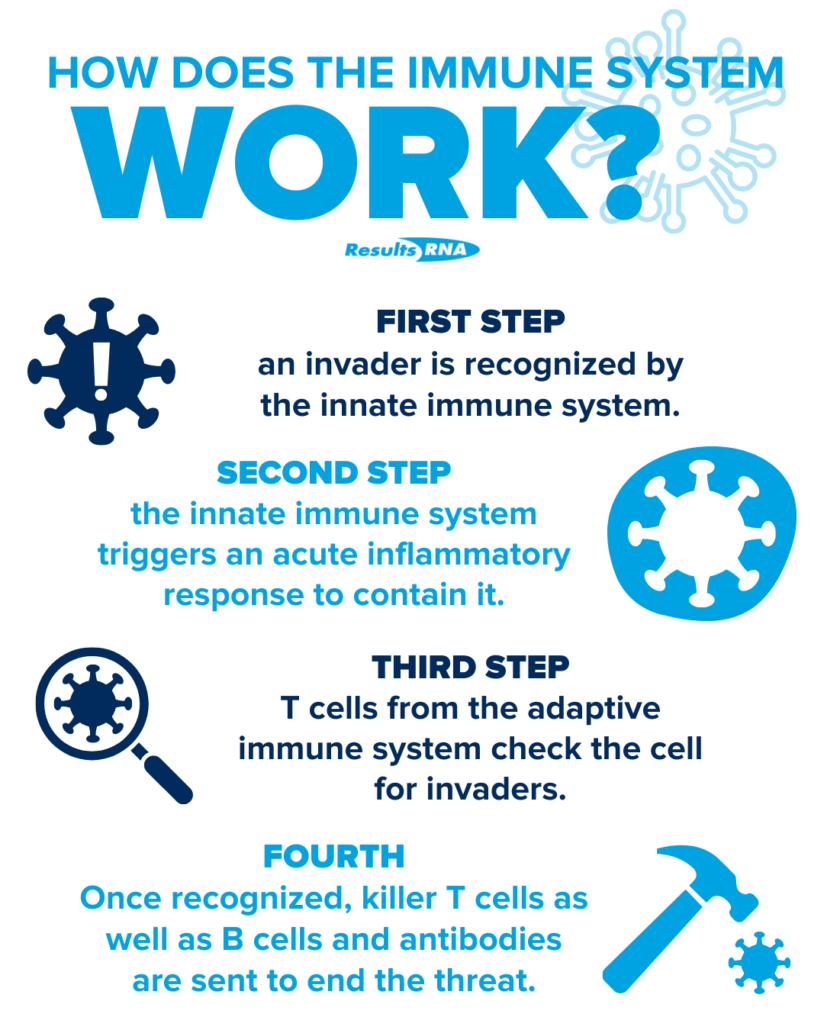The Seven Parts of the Immune System
The immune system is what protects your body from invaders, such as bacteria, viruses, fungi, and toxins. The immune system consists of a complex network of organs, cells, and substances that work together to fight off these invaders. There are 7 main parts of the immune system that actively battle infection.
They are as follows:
1. White blood cells
White blood cells are arguably the most involved part of the immune system. White blood cells scour the blood and tissues of your body for foreign invaders (microbes) such as bacteria, viruses, parasites, and fungus. They launch an immune support attack when they find them.
You might be familiar with a type of white blood cells called: lymphocytes, a type of cell made in bone marrow and found in blood and lymph tissue. Lymphocytes include B-cells, T-cells, and natural killer cells.
These B and T lymphocytes keep track of every germ the immune system has ever fought. The immune system remembers every germ it has fought off, so if it ever appears again, the immune system is prepared how to best attack.
Additionally, B lymphocytes make antibodies.

2. Antibodies
Antibodies work to fight harmful substances known as antigens. Chemicals on the surface of these invader antigens indicate that it is foreign, thereby signaling antibodies to essentially mark them to be destroyed.
Each type of antibody is a specialized type that defends against only one specific type of antigen.
3. Complement system
The complement system is as it sounds: a group of proteins whose job is to complement that of the antibodies and induce a series of inflammatory responses in the immune system.
4. Lymphatic system
The lymphatic system consists of lymph nodes that trap invaders, lymph vessels that provide the fluid that contains white blood cells and covers your tissues, and white blood cells.
According to Better Health, the main roles of the lymphatic system are to:
- manage the fluid levels in the body
- react to bacteria
- deal with cell products
- absorb some of the fats in our diet from the intestine.
5. Spleen
The spleen is an organ that filters the blood to remove germs and red blood cells that need to go. The spleen is also responsible for creating antibodies and lymphocytes, in addition to other fighting components of immune support.
6. Thymus
The thymus gland is an organ found in the chest between the lungs and behind the sternum that creates a hormone used to produce the white blood cells, T-lymphocytes, discussed earlier. It also trains white blood cells on how to recognize invaders.
7. Bone Marrow
The spongy tissue located inside your bones is called bone marrow. It creates red blood cells that carry oxygen throughout our bodies, platelets that help our blood clot, and white blood cells.
 How to Protect Your Immune Support
How to Protect Your Immune Support
It is evident that the immune system is highly intelligent and is not only powerful, but essential to your health and wellbeing. Understanding the immune system can be key to protecting it. Because there are many invaders that enter the body multiple times throughout one’s life (many of them are from the same strain), you will not always be immune, despite overcoming the illness once before.
This means you must make a conscious effort to support your immune system. What can you do to protect yourself then?
Results RNA’s liquid-based formulations help to cleanse the body of harmful pollutants and toxins, stimulate immune support, and restore critical nutrients in order to bolster immune support powerfully and effectively.
Sources:
- https://health.clevelandclinic.org/what-happens-when-your-immune-system-gets-stressed-out/
- https://www.dupagemedicalgroup.com/health-topic/5-ways-to-boost-your-immune-system-through-your-gut
- https://www.apa.org/research/action/immune
- https://www.pennmedicine.org/updates/blogs/health-and-wellness/2020/march/weakened-immune-system



